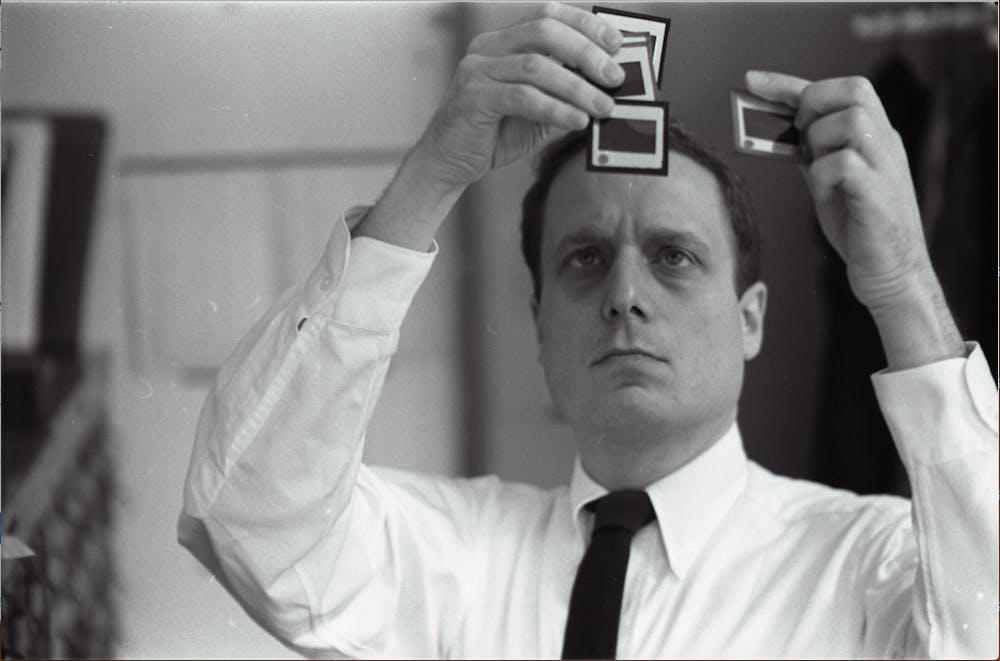The Architectural Archives comprises the basement level of the Fisher Fine Arts Library. Apart from the central gallery and reading room, it’s a labyrinthine space of project drawings, notebooks and models piled on shelves up to the ceiling. The Archives were established in 1978, when the University acquired Louis Khan’s personal collection of drawings, correspondence and project files (on permanent loan from the Pennsylvania Historical and Museum Commission). Now, they serve as an internationally renowned resource for scholars of art and architectural history. Currently, the archives are showing “Back Matter: The Making of Robert Venturi’s Complexity and Contradiction” until March 3rd.
Venturi’s Complexity and Contradiction in Architecture, published in 1966, is a landmark architectural text and something of a manifesto for postmodern architecture. The exhibition at the Archives seeks to trace the origins of the ideas Venturi puts forward in the book. It also places a strong emphasis on the material he taught at Penn in his “Theories of Architecture” course.
The exhibition begins with a quote from Venturi's first lecture for the course, emblazoned in vinyl letters across two walls: “There is probably too much talking about architecture today… However, that’s what I’m going to do in these lectures.” It reflects the playful and contradictory attitude that characterizes many of his lectures — and his work in general. Lecture II, about site and context in architecture, compares Frank Lloyd Wright and Palladio and analyzes their contrasting approaches. Lecture V, about material and texture, again uses Wright as an example, but by placing his Falling Water in dialogue with the Trevi Fountain. Another focuses on the relationship between light and space, and the final, Lecture XIV (April 27, 1965), wraps up Venturi’s ideas and warns his students not to forget the “final exam Thursday at 10:30.”
For archivist Heather Schumacher, the lectures are vignettes. Their abstract quality and poetic form (strings of words, definitions, a disregard for syntax) are arresting. These lectures enable exhibit visitors to look into the past, into Venturi's mind. Moving through the exhibition, one can connect them together and draw tentative lines of narrative between them—something Venturi himself did, really, when developing Complexity and Contradiction.
And the Archives have a lot going on outside of "Back Matter." They also house the archives of Robert Venturi & Denise Scott Brown, Lawrence Halprin and Anne Griswold Tyng, among others. Cataloguing and organizing these collections is a monumental task. There are two things to consider when dealing with archives, according to Ms. Schumacher: provenance and original order. It requires asking how an architect thinks, and more broadly, what is the creative process?
Stop by Fisher Fine Arts and see for yourself.

